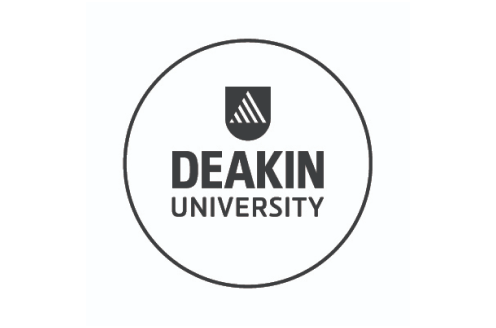Popular Applications of Data Science
Learn to work with various applications built concretely on Data Science concepts. Enroll in this free course to get hands-on with data science applications and understand architecture, components, and career opportunities in Data

Ratings
Level
Learning hours

Learners
Skills you will learn
About this course
The Applications of Data Science course caters to Data Science enthusiasts to work with various real-time problems. The course begins with giving you an introduction to Data Science and helps you get your hands-on working with the application to develop solutions for data science problems. You will learn about various components of data science and understand its importance. The latter part of this course comprehends popular data science applications and points out various career opportunities that the domain has to offer. Take up the quiz assigned at the end of the course to evaluate your gains and avail your certificate.
After completing this free, self-paced, beginner's guide to Applications of Data Science, you can embark on your Data Science career with a professional Post-Graduate Data Science certificate course and learn various concepts with millions of aspirants across the globe!
Course Outline
This section gives you various examples to help you understand Data Science. It explains how you decide on a place for the vacation, how the weather is predicted, and sales during a particular time in a year using data science.
This section explains the need for data science to work with exponentially growing data every second. It points out how humans landed on the moon with understanding data and how a system can send millions of emails every day based on previous customer records.
To understand the process of Data Science, you must first understand its backend. Thus, this module focuses on its architecture. You will go through the five significant steps in the Data Science lifecycle.
For architecture to work, specific components play a significant role. This module will go through four essential components of Data Science in detail.
This section comprehends your knowledge of various data science applications such as game logic, product logistics, google duplex, visual search, personalized advertisements, augmented reality, chatbots, sports analytics, personalized pricing, and education.
 UPGRADE
UPGRADE
Recommended university programs
Frequently Asked Questions
Will I receive a certificate upon completing this free course?
Is this course free?
What are the prerequisites to learning this Data Science Applications course?
This is a beginner's course and does not require any prior knowledge except for knowing the basics of computers and foundational knowledge of data science concepts. This course brings various applications concretely built on data science concepts.
How long does it take to complete this free Applications of Data Science course?
Data Science Applications is a 1-hour long course but is self-paced however. Once you enroll, you can take your own time to complete the course.
Will I have lifetime access to the free course?
Yes, once you enroll in the course, you will have lifetime access to this Great Learning Academy’s free course. You can login and learn whenever you want to and refer to the attached study materials at any point after enrolling in the course.
Other Data Science tutorials for you
Popular Applications of Data Science
What is Data Science?
Data Science is a multidisciplinary approach that combines domain expertise, programming skills, and knowledge of mathematics and statistics for extracting actionable insights from the large and ever-increasing volumes of data collected and created by today’s organizations.
Data Science is all about analyzing the raw data and finding patterns using various complex and efficient algorithms. These patterns are used to visualize the data and understand the data to find the results, which will be helpful in business growth.
Data Science is all about finding insights and patterns with the help of data through analysis. The data scientist finds the insights and patterns by using different important procedures.
Today data science is used in multiple fields such as in the field of healthcare, sports, transport, finance industry, etc.
Prerequisite for Data Science
-
Machine learning: To solve business problems from structured or unstructured data, one must have good knowledge of machine learning algorithms.
-
Programming: You must have deep knowledge of one of the programming languages. For data science, Python, R and Spark are some important programming languages.
-
Database: The understanding of SQL, MongoDB, MySql is important to work on a large amount of data.
-
Statistics: In data science, to extract information from data, we need to have a good understanding of statistics such as mean, median, mode, variance, standard deviation, etc.
-
Critical thinking: Apart from technical skills, you need to think out of the box and find out multiple ways to solve the problems in a more efficient manner.
Tools used for Data Science
Here are some tools required for data science:
-
Data warehousing tools: ETL, SQL, Hadoop, Informatica/Talend, AWS, Redshift.
-
Machine learning tools: Spark, Mahout, Azure ML studio.
-
Data visualization tools: R, Jupyter, Tableau, Cognos.
-
Data analysis tools: R, Python, Statistics, SAS, Jupyter, R Studio, MATLAB, Excel, RapidMiner.
Data Science Lifecycle
The data science lifecycle or also known as the data science pipeline is divided into multiple steps.
-
Capture: In the first stage, the raw data (structured or unstructured) is collected via any method such as web scraping, manual entry, or capturing data from systems and devices in real-time.
-
Data preparation: In this stage, the raw data are out into a consistent stage format. In this phase, data cleaning, data reduction, data integration and data transformation are performed. Data preparation is also called Data munging.
-
Preprocess or process: In this stage, the data scientist looks into the patterns, ranges, biases, and distributions of values within the data. It helps in determining the data suitable for use with different analytical methods.
-
Analyze: In this phase, the data scientist uses various analytical methods such as regression, predictive analytics, machine learning, and/or deep learning algorithms to find the insights from the prepared data.
-
Communication: In the final stage, the insights are represented in the form of reports, charts, or other data visualization techniques that help to find the impact in the business and are easier to understand for decision-makers.
Important Roles in Data Science
-
Data Scientist : A data scientist identifies the problem statement and collects, prepares and organizes data to decipher useful information from that data. Finally the information is used to find the business solutions. The data scientist should also have communication and leadership skills.
-
Data Analyst : A data analyst is an individual who works on a specific problem. Their role is to find the results by organizing and analyzing the given data. They also visualize the data in order to present to the stakeholders.
-
Data Engineer : The data engineer manages a large amount of data. They use to collect, manage and convert large amounts of data into useful information for business analysts and data scientists to interpret. They mostly work with Java, MongoDB, R, Scala, etc.
Applications of Data Science
-
Applications of Data Science in Healthcare
-
Medical imaging : The primary application of data science in health care is medical imaging. There are multiple imaging techniques such as CT scan, X-Ray, etc. which are used to visualize the inner part of the human body to find the irregularities within them. Doctors manually examine the image to find irregularities but it is difficult to find the microscopic deformities. With the help of deep learning technology it becomes easier to find the microscopic deformities from the scanned images.
-
Drug discovery : Drug discovery is one of the complicated disciplines in pharmaceutical industries. They depend upon data science technology to solve their problems and create better drugs for the people. Drug discovery requires heavy financial expenditure and testing.
-
Predictive analytics : Predictive analytics is one of the most important topics in health analytics. The predictive model learns from the historical data, finds patterns and gives predictions based on the data. Predictive analytics is useful in improving patient care, increasing the efficiency of supply chains, chronic disease management and increasing the efficiency of pharmaceutical logistics.
-
Applications of Data Science in Banking
-
Fraud detection : The machine learning models help banking and companies to find the frauds and malicious transaction patterns. It involves the data sample for training models. The process involves training a model using several machine learning algorithms and then testing and deploying the model. The K-means clustering and SVM are used for data-preprocessing and classification.
-
Customer segmentation: The machine learning algorithm helps to segment the customer on the basis of their common characteristics and behavior. One of the popular unsupervised clustering algorithms is K-means, which is used to cluster the similar data points.
-
Risk modeling : In the banking industry, Credit risk modeling is on the higher priority. It helps banks to analyze how their loan will be repaid. With the help of big data and data science, the banking industries can analyze and classify the defaulters before sanctioning loans.
-
Applications of Data Science in Finance Industry
-
Customer data management : The finance industry requires a large amount of data. This data can be in the form of structured or unstructured data. The structured data is easy to handle whereas the unstructured data is difficult to handle. It requires several NoSQL tools and processes with the help of MapReduce. Industries use machine learning algorithms to generate insights about the customers and extract business intelligence.
-
Customer analytics : Customer analytics plays a major role in financial institutions. With Data Science in the picture, organizations can get the customer insights in real time that helps them to analyze and make business decisions.
-
Financial fraud detection: In financial institutions fraud is a major concern because of the increase in online transactions. But with the help of analytical tools, the financial institutions can keep track of it. They use machine learning algorithms to detect unusual patterns. The anomaly detection is one of the easier and gives higher accuracy in fraud detection.

















.png)







.jpg)
.jpg)

















